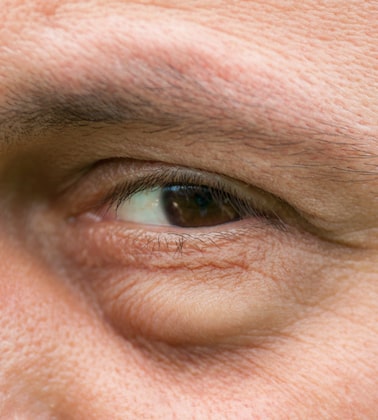
As a person ages, the eyes can start to look older thanks to excess skin and a dropping look to the eyelid. Eye bag surgery, which is known as lower blepharoplasty, is performed to lift the lower eyelid and also remove any excess tissue that is present in the area under the eyes. In order to learn how this procedure gives the eyes a rejuvenated look, let’s start this informative article with the 411 about blepharoplasty from Cosmetic Town TV:
In general, eye bags are swollen or puffy areas that are visible under the eyes. As a person continues to age, the muscles that are supporting the eyelids start to soften and this can cause fat in the area to fall into the lower eyelids and form eye bags that give someone a tired or older look.
The goal of lower blepharoplasty is to address the issue of excess tissue under the eyes that can cause eye bags to appear. The procedure starts with the creation of an incision below the lower eyelashes or the placement of an incision inside the lower eyelid. Then, the surgeon removes the necessary amount of fat or excess skin to give the treated area a younger and more rejuvenated look. The surgeon will then use stitches to close the incision. There are also times when the doctor will use glue to close the incision.
Patients will be able to go home the same day as the eye bag surgery with the surgeon giving them proper instructions on how to care for the lower eyelid. They will need to arrange for a ride home after the surgery and they should make sure and have someone with them the first night of recovery to help take care of them when they return home.
 At the start of the recovery process, patients will experience some bruising and swelling as well as some irritation in the treated area. These conditions can last around two weeks and can also include a dry and uncomfortable feeling to the eyes.
At the start of the recovery process, patients will experience some bruising and swelling as well as some irritation in the treated area. These conditions can last around two weeks and can also include a dry and uncomfortable feeling to the eyes.
If the surgeon used stiches to close the eyes, they will be removed about five days after the procedure. The healing process takes a few months and patients might need to use lotions and cold compresses during this time period.
There are some risks that patients need to know about when it comes to eye bag surgery. Some of the most common risks include dry eyes, sensitivity to the sun or bright lights, infection, uneven appearance to the results, outward rolling of the lower eyelid, difficulty with closing the eyes, temporary pulling down of the lower eyelid, scarring, and temporary or permanent changes in the vision of the patient.
There are many patients who think that a surgical eye bag procedure is the only option to treat the appearance of eye bags. Thankfully, there are other techniques available to the public that are not as invasive as a surgical procedure. Some popular nonsurgical eye bag options include:
The first step of the eye bag surgery process is scheduling a consultation appointment with a board-certified and experienced surgeon with a proven track record of providing results that are long-lasting and natural in appearance.
The surgeon will review the medical history of the patient and also check the current status of their vision and their eyelids. During the medical history portion of the consultation appointment, the doctor will ask about any preexisting eye conditions that might make the patient a less than ideal candidate for the procedure. The doctor will also take photos of the eyes to better assess their current condition.
It is also important for the surgeon to set realistic expectations when it comes to the appearance of the eye bags after the surgery. While the procedure can make a big difference in the appearance of the eyes of a person, it is important for the patient to know the extent of the changes that will be made by the surgeon. Once the patient has all of the necessary information about the procedure, an educated decision can be made about having eye bag surgery.
- MA